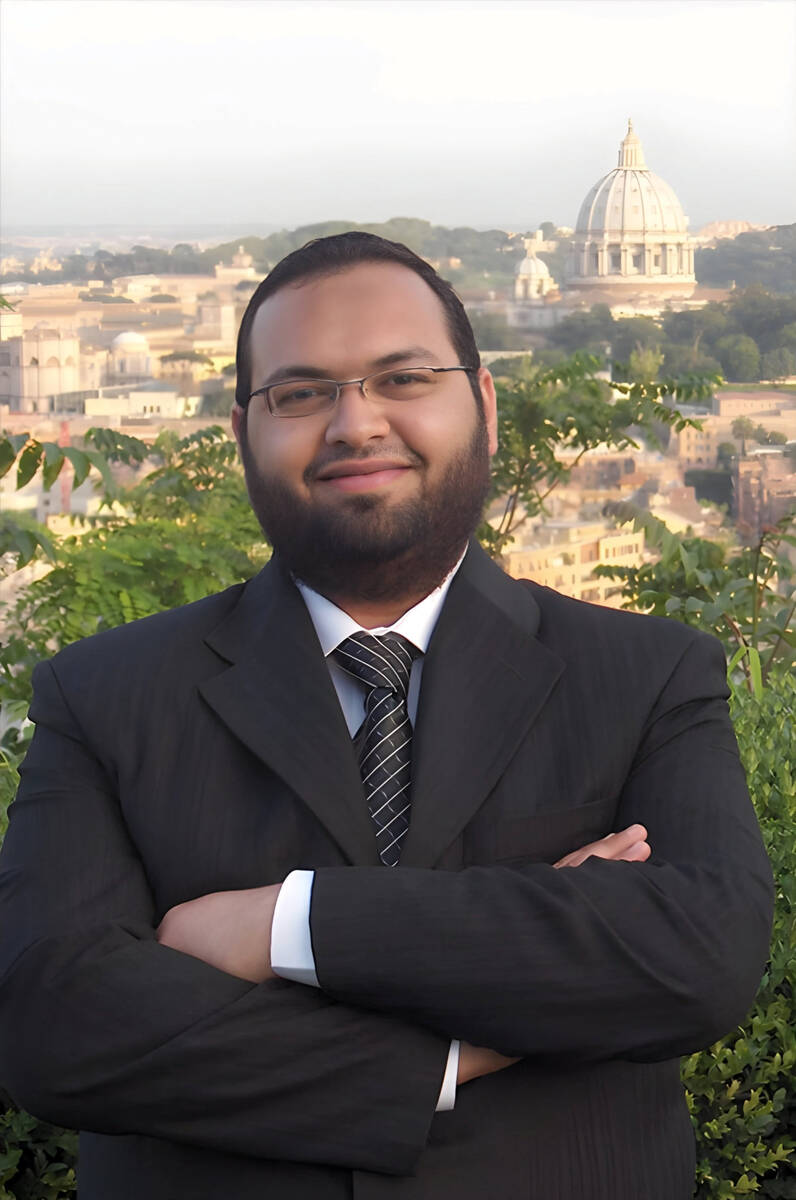NEW YORK: Architect May Shaer marvels at the fact that Diriyah has endured for 250 years. Could this be because for centuries the ruins remained tucked away in the narrow Wadi Hanifah valley and so were spared the destructive effects of human interference?
Perhaps the harsh climate treated this oasis of mud-brick houses and ramparts a little more kindly than other historic heritage sites in the desert? Or are the ancient mud-brick building methods — that caused little or no harm to the environment and worked in harmony with the natural capacities of local ecology — more resilient that modern architectural technologies?
“It is not that often that you find a remaining example of a complete homogeneous urban settlement that prospered in a desert environment. In that sense, Diriyah is extremely rare,” said Shaer, who is the head of the Arab States Unit at the UN Educational, Scientific and Cultural Organization’s World Heritage Center.
The ruins of the old city, which consist almost entirely of adobe, or mud-brick, structures, lie on either side of Wadi Hanifah, a narrow valley that runs south toward Riyadh and beyond. After their city was destroyed by the invading Ottoman army in 1818, the inhabitants of Diriyah moved to Riyadh, leaving behind the remnants of their former capital.
British author Robert Lacey likened Diriyah to “a sand-blown Pompeii,” describing it as “an enduring reminder of the frontiers of the possible.” It is divided into three districts, built atop the hills overlooking the valley. At-Turaif, a UNESCO World Heritage Site, is the highest promontory of the three and the lower reaches are easily accessible on foot.
The city lay abandoned for more than a century before families began to trickle back in in the mid-1900s and build new mud-brick homes.
“Despite it being originally built with adobe, a very delicate material that needs constant maintenance and protection, the whole ensemble has retained more or less its original urban form, its structural integrity,” said Shaer.
To earn a place on the World Heritage List, she explained, sites must include enough remains to illustrate their history and “physically be able to explain their importance.”
“With most of (Diriyah’s) components still in place, you can read the plan,” she said. “You can understand how people lived here; how they interacted with, and built for, their environment. Diriyah tells the whole story.”
The addition of a site to the World Heritage List is recognition of its outstanding universal importance and value to the world. So what exactly does At-Turaif offer humanity at large? What can the rest of the world learn from its story?
“First, the citadel of At-Turaif represents a diversified and fortified urban ensemble, comprising many palaces within an oasis,” explains Shaer. “It is an outstanding example of the Najdi architectural and decorative style, which only developed in the heart of the Arabian Peninsula.
“Along with its remarkable sense of geometrical decoration, At-Turaif bears witness to a building method that adapted to its environment, using adobe in major palatial complexes.”
It is the story, then, of a people constantly at odds with hostile forces of nature, who made use of one of the few readily available resources, mud, in an original and innovative way to cope with the extreme desert climate and create comfortable living conditions. This ingenious tradition of building with mud bricks also utilized other local natural resources that were easy to find, including limestone for foundations, and wood from palm trees. The Najdi architects also made use of clay-mud rendering, stone columns, and wooden lintels painted with geometric motifs.
The traditional characteristics of Najdi towns include a dense urban fabric, narrow streets, and buildings that feature an inner courtyard and thick walls to naturally regulate temperature.
“This whole, complete structure (of Diriyah) reflects life in a desert environment, one that has managed to exist because of the natural aspect of the land, which allowed people to settle in the area,” said Shaer.
“It is a settlement within an oasis, and oases are always very special places because they provide water, life and some kind of biodiversity.”
According to the case that was presented to UNESCO when At-Turaif was nominated as a World Heritage Site, the lattice of dry valleys in the area was carved out during wetter geological periods. As a result, water tables survived permanently in the ground under some of these valleys, which could be utilized by digging wells.
“Wadi Hanifah is one of the rare places where there used to be enough rainfall to sustain some form of agriculture, especially palm groves and irrigated oasis agriculture,” said Shaer. “At the same time, people dug wells to extract ground water. They used animals, camels and horses, to transport the water.”
Another factor in the site’s favor is its historical authenticity, thanks to its relatively undisturbed urban and architectural treasures.
“The initial planning is well preserved and can be clearly observed in its road network, and the place has not been subject to excessively aggressive development,” explained Shaer.
In addition to its wonderful urban coherence, At-Turaif’s social, political, spiritual and religious functions developed simultaneously and organically alongside its physical growth.
“This was also recognized by the World Heritage Committee as matching one of the conditions for the inscription on its list,” said Shaer.
One of UNESCO’s criteria for World Heritage status is that a site needs to be “directly or tangibly associated with events or living traditions, with ideas or with beliefs, with artistic and literary works of outstanding universal significance.”
The significance of At-Turaif is directly related to the founding in Diriyah of the First Saudi State in 1744, at the heart of the Arabian peninsula, and its subsequent development.
Now, more than a decade after At-Turaif was inscribed as a UNESCO World Heritage Site, this birthplace of what became, almost two centuries later, the Kingdom of Saudi Arabia, is an increasingly popular major tourist attraction.
Visitors can stroll among the remains of the old mud-brick buildings, families can picnic under date palms as children play on the paths that snake between modern conveniences such as restaurants and coffee shops.
The admirably ambitious goal of the Diriyah Gate Development Authority is to transform this historic attraction into “one of the world’s lifestyle destinations for culture and heritage, hospitality, retail and education.”
“It is good to see Diriyah open up for tourists,” said Shaer. “Visitors come here to learn and understand history, our past. Culture can bring people together. Diriyah reminds us of all the things we humans have in common.”
But in a world where many sites of historical importance are exposed to potential hazards, whether accidental, deliberate or as a result of natural disasters, tourists have a crucial role to play in ensuring that Diriyah survives and thrives for future generations to admire and enjoy. They need to learn the importance of conservation and efforts to protect and preserve historic sites, said Shaer.
“In the end, these sites are fragile,” she added. “Diriyah is fragile and we need to take care of it — all of us.”
She said that the responsibility for the protection of World Heritage sites does not lie solely with the authorities in the countries where they are located.
“We all have this responsibility, on so many levels; it is a collective responsibility,” she added. “The World Heritage Convention was created just for that. Its very raison d’etre is the collective responsibility of the international community to ensure the protection and conservation of sites that are important for all of us and, most crucially, for the future generations.
“Because we humans have a pressing need to understand our past, cultural heritage is part of our universal human identity. So, sites are inscribed as (part of the) world heritage precisely so they can be conserved and protected.”
Perhaps no one is more excited about the return to prominence of Diriyah than Saudis themselves, especially young people. When the Diriyah Gate Development Authority launched the recent Rawi Al-Diriyah (Diriyah’s storyteller) competition to encourage students to learn about the Kingdom’s ancient storytelling tradition, more than 250,000 middle-school and high-school students registered for the contest, and more than 12,000 entries were submitted.
“Such initiatives are very important,” said Shaer. “When you have these kind of intangible, cultural heritage-awareness activities, or even creative cultural activities that can be connected to a physical place, it helps people to understand why this site was important.
“This helps strengthen the connection with the place as it gives people the opportunity to integrate the intangible values with the tangible aspect of the place. You can identify with it and understand more why you want to preserve it for future generations, for your children and grandchildren. It can play a positive role in your life.”































